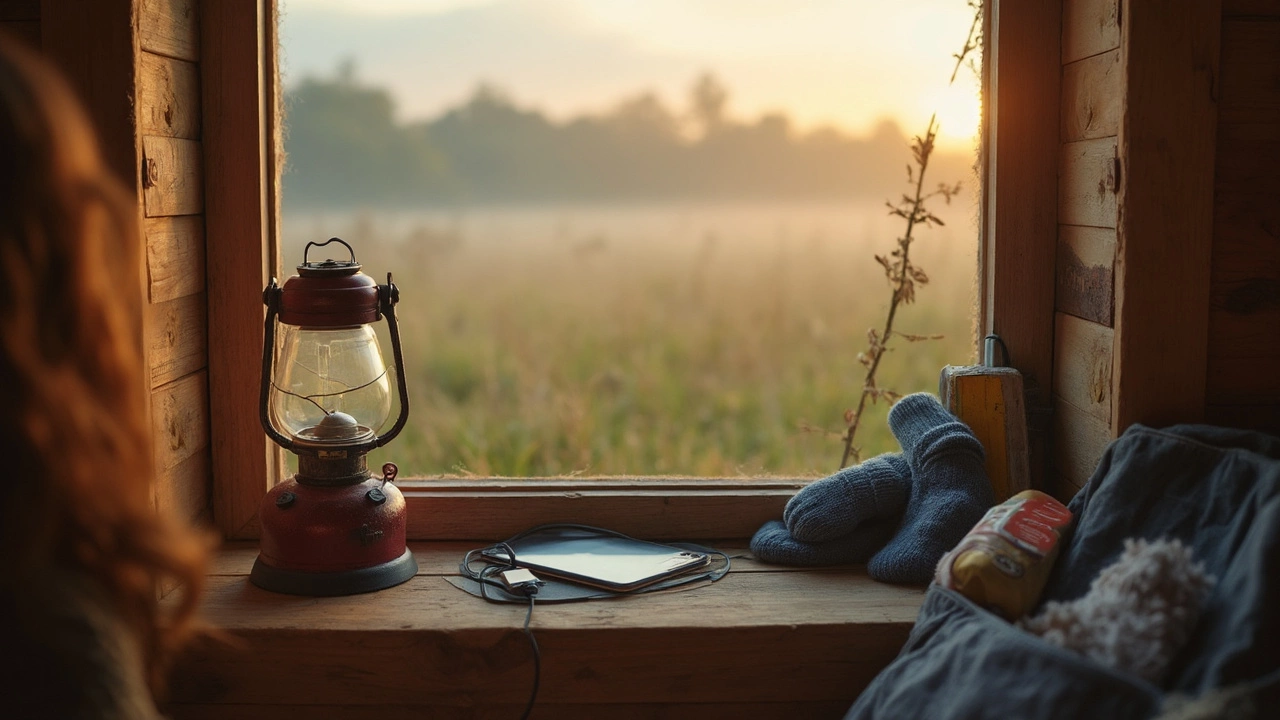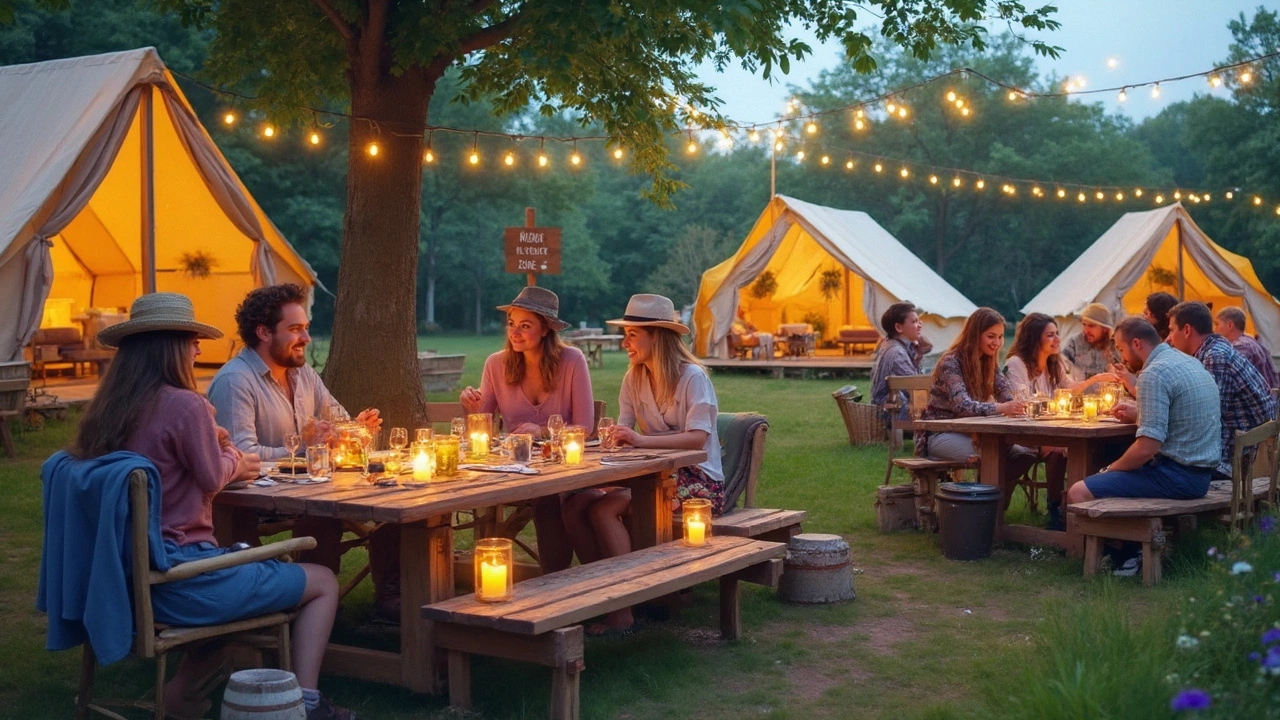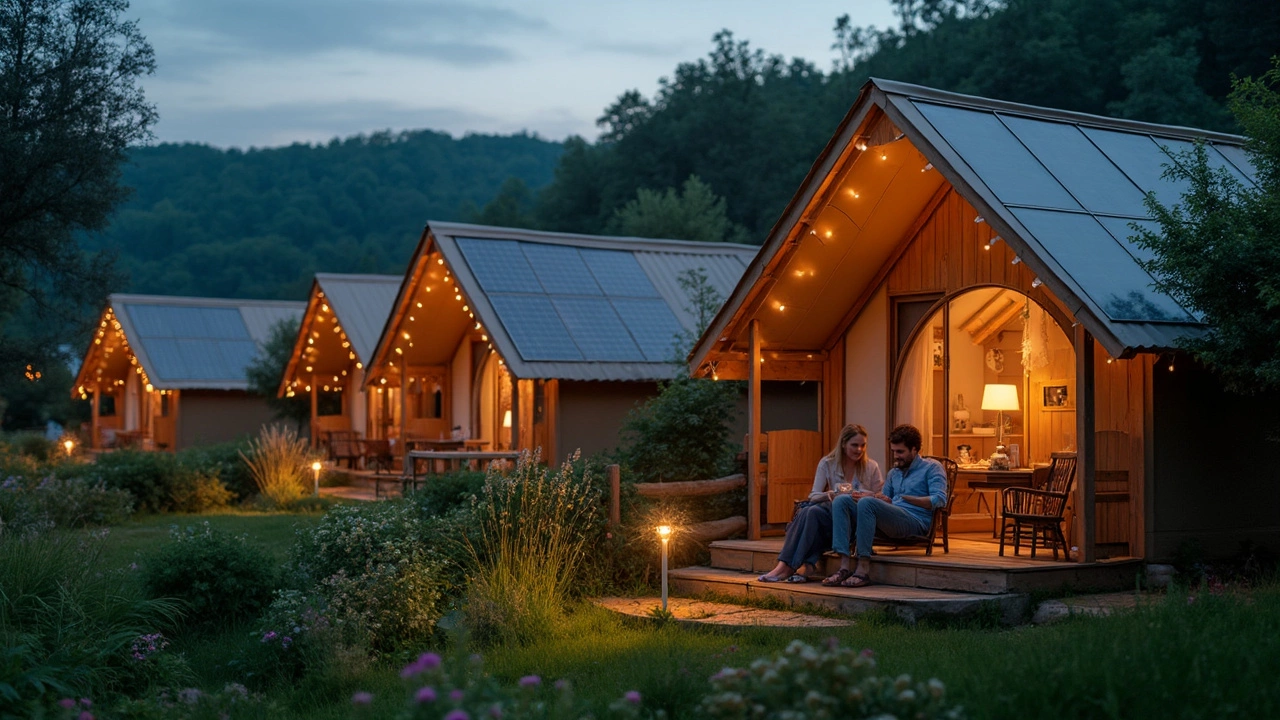Do You Have Electricity When Glamping? What to Expect at Eco-Friendly Cottages
30 May, 2025If you're picturing glamping as luxury camping with all the bells and whistles, you might wonder if electricity is part of the deal. The answer? It depends where you stay. While some eco-friendly glamping cottages plug right into the grid, others skip typical power outlets for a greener vibe.
Most modern glamping spots offer some kind of electricity, but don’t always expect to find standard wall sockets everywhere. One cottage might use solar panels for basic lights and phone charging, while another could let you run a hair dryer and cook with an induction hob. You’ll want to check before you pack all your favorite gadgets. Nothing’s worse than dragging your laptop along to discover there’s nowhere to charge it.
Eco lodges often balance comfort and sustainability. That means power-saving bulbs, charging stations for the essentials, and sometimes designated hours when electricity is available. Some sites even encourage a bit of device-free living. Unexpected bonus? With less screen time, you actually notice the stars—or your friends.
- How Glamping Powers Up: The Basics
- Types of Electrical Setups in Eco Cottages
- Off-Grid Options: Solar, Wind, and More
- Staying Comfortable Without Full Power
- Smart Packing and Must-Know Tips
How Glamping Powers Up: The Basics
Most people think glamping means electricity is a given, but it’s not always that simple. While hotels guarantee power, glamping setups vary a lot. Some want the feeling of a cozy cabin, others prefer a tent with just the basics. The key thing is that glamping covers a wide range, so what you get—electricity-wise—depends entirely on where you stay.
In eco-friendly cottages, you’ll often find power setups built around the environment. These places usually avoid heavy grid use to stay green. Instead, many use solar, wind, or even micro-hydro power for basic needs. That means you'll probably have lights, maybe a place to charge your phone, and sometimes small appliances. Big energy suckers like air conditioners and electric ovens? Usually a no-go, unless you’re in a rare, grid-connected luxe spot.
Here’s what most glamping cottages offer for electricity:
- Low-wattage LED lights, set to save power.
- At least one USB charging port for phones or cameras.
- Sometimes a shared outlet in a common area, not always in your room.
- Occasional use of generator backup, but only if absolutely needed since it’s not eco-friendly.
If you’re wondering whether to pack your hair dryer or travel blender, check your cottage’s info page or ask before you go. Some places ban anything with a heating element to keep energy use low. Always look for the power rating or FAQ on the glamping website for clear details.
Simpler setups aren’t just about saving the planet—they keep you from missing out on what’s around you. With less reliance on constant power, glamping lets you unplug, slow down, and actually enjoy those campfire moments with friends or family. Not a bad trade-off for leaving a few gadgets at home.
Types of Electrical Setups in Eco Cottages
Not all eco-friendly cottages handle electricity the same way. Some places go for full grid power, while others mix things up with solar or wind. It's all about balancing comfort with keeping it green. Here’s what you might run into as you plan your next getaway.
- Grid-Connected Power: Think of this as the classic setup you’d get at home. Plug in your phone, microwave leftovers, and even work remotely. Plenty of eco cottages stick with the grid, but pair it with energy-saving appliances and LED lighting to cut down on wasted power.
- Solar-Powered Systems: Just because you’re outdoors doesn’t mean you’re left in the dark. Many eco cottages use solar panels for the essentials—charging devices, running lights, keeping small fridges running. Some places have large rooftop panels; others keep it low-key with portable battery banks.
- Off-Grid Mix (Solar + Generator): Some sites blend solar with a backup generator for cloudy days or big power needs. Usually, the generator only fires up if you’re running low, so you stay green most of the time without sacrifice. It’s common on sites that want off-grid reliability without cutting comfort.
- 12V or USB-Only Charging: Some eco stays offer just the basics. Instead of wall outlets, you get USB ports, which work for charging phones, tablets, and small speakers. You won’t be able to plug in high-power stuff, but your essentials stay topped up.
- Human-Powered Gadgets: Don’t laugh. A few hardcore eco spots hand out hand-crank lanterns, or even pedal-powered charging bikes. It’s quirky, but you’ll always have a way to charge if all else fails.
Here’s a quick look at the most common setups and what you can power at each one:
| Type of Setup | Devices Supported | Common in |
|---|---|---|
| Full Grid | Laptops, lights, appliances, kitchen gear | Luxury eco cottages, barn conversions |
| Solar Only | Lights, phones, USB devices, mini fridge | Remote cabins, safari tents |
| Solar + Generator | Lights, charging stations, sometimes high-power use | Rainy/windy regions, mid-range eco camps |
| USB/12V Only | Phones, e-readers, some cameras | Minimalist pods, treehouses |
If you need to power medical devices, laptops for work, or a CPAP machine overnight, check with your host about what’s possible. Some eco cottages look rustic but actually have surprising options for electricity. The trick is knowing your needs and asking upfront.

Off-Grid Options: Solar, Wind, and More
When you book a stay at an eco-friendly cottage, you’re often tapping into nature’s power. Solar is king here. Many off-grid glamping sites rely on solar panels mounted on the roof or nearby stands. These soak up sunlight all day and feed batteries that store enough juice for lights, charging phones, and sometimes running a small fridge. You’ll typically see USB ports or low-power outlets in these setups—just don’t expect high-wattage appliances.
Electricity at glamping sites doesn’t only come from solar. Some cottages use small-scale wind turbines, especially in breezy spots like coastal areas or valleys. They don’t make much noise but can be surprisingly effective, especially during stormy seasons. Wind power usually works alongside solar to fill in gaps when the sun’s not shining.
There are clever hybrid systems, too. Some eco cottages combine solar, wind, and even micro-hydro generators if there’s running water nearby. This can mean more reliable power for guests—so yes, lights stay on even when the clouds roll in or the wind dies down.
- Solar panels: Great for sunny spots, best for essential power only.
- Wind turbines: Perfect in windy regions, good backup for cloudy days.
- Micro-hydro: Rare, but super steady if there’s a strong stream or river.
- Batteries and inverters: Store and manage the energy, but watch for daily limits.
Here’s the thing—these setups are built for efficiency, not overload. It’s smart to ask your host what you can and can’t use. Forget dragging a hair straightener or gaming console; stick to essentials like your phone and maybe a small camera. Plus, if you see rules about power hours or low light use after dark, it just means there’s a fixed energy budget for everyone.
Off-grid systems aren’t just good for the planet—they make you think about what gadgets you really need. Trust me, you’ll get used to it faster than you think.
Staying Comfortable Without Full Power
No full electricity? No problem. Loads of glampers actually like the challenge—and you’d be surprised at how easy it is to stay comfy. Most eco-friendly cottages make smart use of battery-powered lighting, solar lanterns, and even rechargeable fans. You’ll want to plan a little, but you won’t need to rough it.
For heating, think about wood-burning stoves or propane heaters, which can easily warm a small cabin overnight. Want a hot shower? Many places use propane or solar showers. In fact, glamping sites in the UK found that 70% offer warm water through solar or tankless setups, even without the grid. If you’re worried about charging your phone, most spots provide a USB battery pack or share a solar-powered charging station—just don’t expect to stream Netflix all night.
Here’s what people usually find helpful in low-power glamping cottages:
- Electricity mainly for lights and charging small devices
- Solar chargers for phones, cameras, and headlamps
- Battery-powered fans (super handy in summer)
- Portable speakers that run on built-in batteries
Wondering how this stacks up in real numbers? Check out this breakdown from a recent glampsite survey:
| Off-Grid Amenity | % of Glamp Sites Offering |
|---|---|
| Solar-powered lights | 83% |
| Solar or portable power for phone charging | 78% |
| Battery-powered appliances | 51% |
| Propane or wood stoves | 64% |
Most folks end up loving how unplugged things feel. Playing cards by lantern, waking up with the sun, and having real conversations—suddenly you realize you didn’t miss that wall outlet at all. If you’re not sure what a cottage offers, just ask before you book. A quick message can clear up what extra gear you should bring along, so you get all the comfort without the hassle.

Smart Packing and Must-Know Tips
If you’re heading to a glamping spot and aren’t sure what kind of power setup to expect, it’s smart to plan your gear around being flexible. Some eco-friendly cottages provide just enough juice for lights and a few chargers, but don’t count on powering everything you use at home. Here’s how to make sure you’re covered.
- Bring battery packs or power banks for your phone and camera—especially if you’ll be taking a lot of photos or need your phone for navigation.
- If you wear glasses or contact lenses, pack a portable LED reading light. Not every site has strong bedside lighting, and running a light all night can drain a limited system.
- Double-check if the cottage accepts standard plug types. Some off-grid places only have USB outlets, so include a USB charging cable for every device.
- Skip the hairdryer, curling iron, or anything else with high wattage. Even if there’s electricity, big energy hogs usually aren’t allowed or won’t work as expected.
- Pack headlamps or flashlight torches with spare batteries just in case. Some areas get pitch dark after sunset and outside paths aren’t always lit.
- If you use a CPAP machine or something essential overnight, talk to your hosts in advance. Many spots can handle it, but only if you ask ahead of time.
Another tip that people often forget: unplug as soon as you’re done charging. Some solar-powered cottages have limited daily energy, so leaving stuff plugged in can drain what everybody shares. If you like your morning coffee, see if the cottage provides a manual press or pour-over. Electric kettles aren’t always available and, honestly, boiling water can drain power setups fast.
It’s always worth checking the host’s FAQ before you finish your packing list. Every site is different, and a quick look at the details can save you from surprises. With a little planning, you can stay comfy, powered-up, and not annoy your eco-friendly neighbors by hogging the outlets.

 by
by